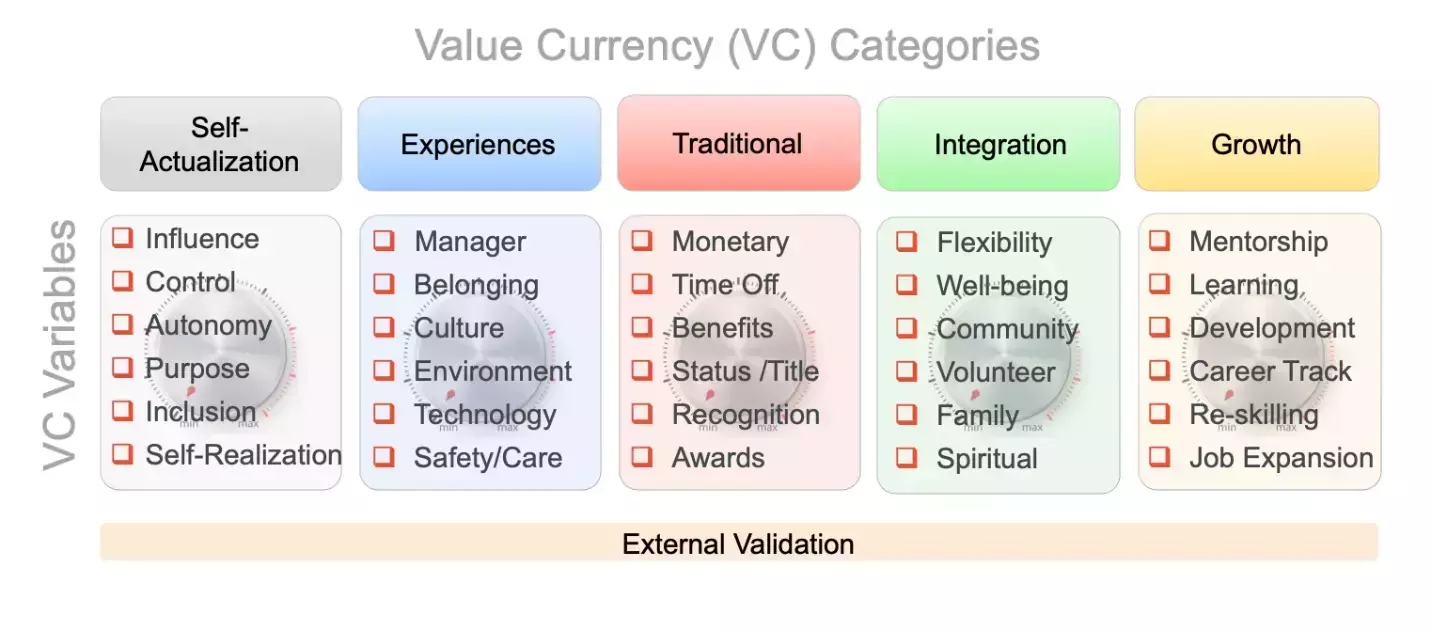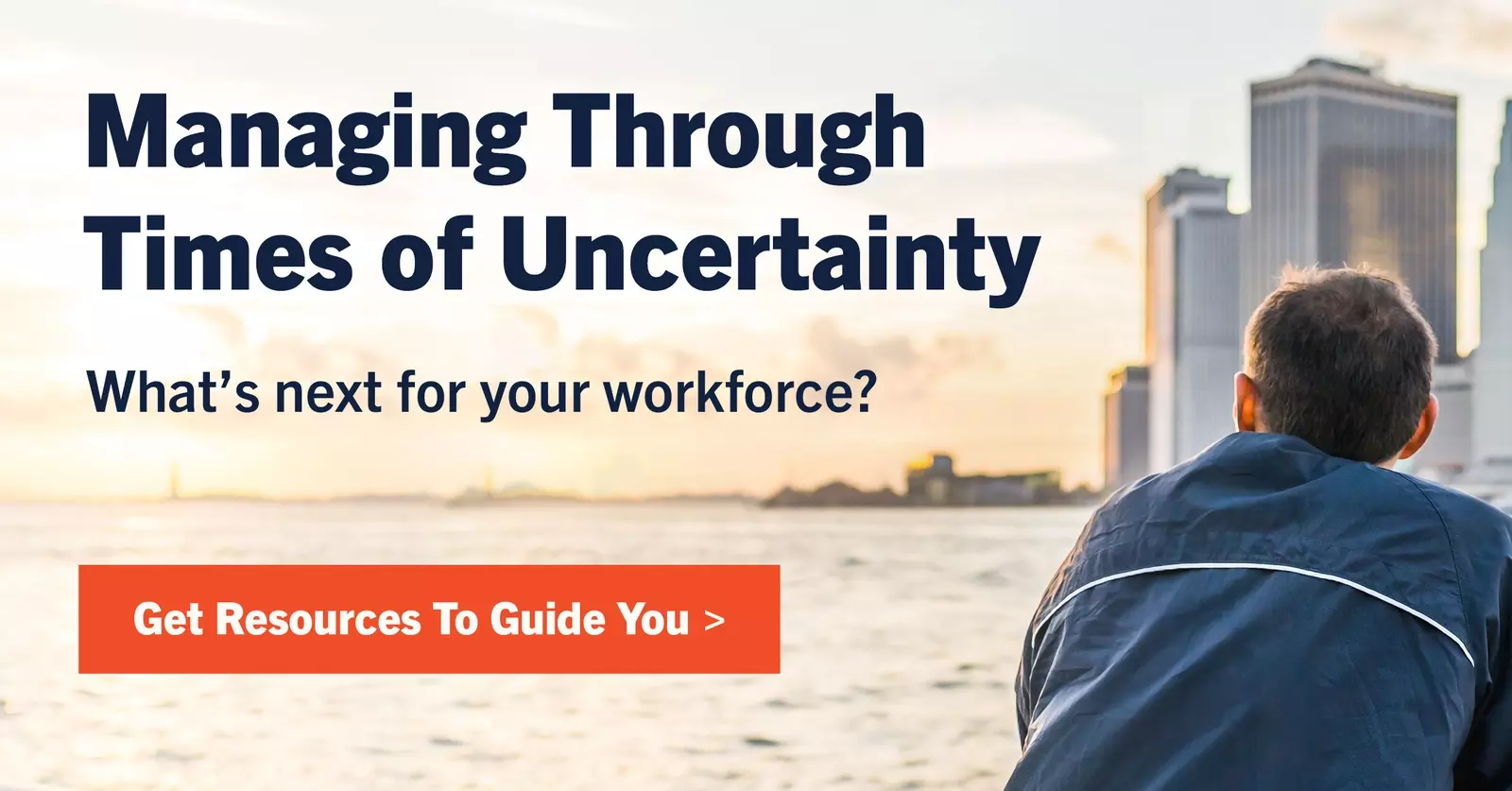If you’re an HR leader who believes your people are your greatest asset – and by now thanks to all we’ve been through you probably should be – you’re likely wondering how COVID-19 has changed their perspective on work. Have the wants, likes, and preferences of your employees changed? Or can you just continue with the same employee value proposition that you had before the pandemic? If adjustments are imperative, in which areas do you need to change? Should you even have to worry about all of this since there is clearly a surplus of available workforce in the market right now?
To answer these questions, let’s start with a story about ice cream.
Yes, you heard me right – ice cream will help us understand the changes going on in the workforce right now. According to the International Ice Cream Association, vanilla remains the most popular flavor with 28 percent of all votes. Vanilla ice cream has been around for over 200 years, but can you imagine an ice cream truck that is offering only vanilla ice cream? How about a supermarket that only carries vanilla ice cream? If you’re thinking that would be ridiculous in most scenarios I would whole-heartedly agree. Consumer expectations have changed and today, the average grocery store in the US offers at least 58 different flavors, and in total there are more than 1,000 different flavors of ice cream available.
So how does this reflect what your people want out of their jobs? A similar trend has happened in the workforce, but many companies are slow in adjusting to the fact that the plain vanilla approach to attracting, retaining, and engaging employees. Just focusing on the monetary value currencies isn’t delivering the desired results any longer. We’ve got to expand our horizons to meet our people’s new expectations. Let’s explore how.
From the experience economy to the resilience economy
We can start by looking back more than two decades ago, when the term “experience economy” was coined. While this term started out referring to the business to consumer relationship, it also heavily influenced how people think and what they expect at work. This makes sense, because if you’re experiencing brands like Starbucks, Amazon, and Netflix during your time away from work, you also build similar expectations for your experience at work related to ease of use, customer service, and selection. Since the rise of the experience economy there has also been an incredible diversification of employee needs and wants in the workforce.
You’re probably wondering how this applies to the current job market and the ways COVID-19’s fallout is impacting employees. The answer is that the wide range of wants and desires that employees had before the pandemic are still there, and the disruption has even amplified some of them. And like in our ice cream example, we need to balance overly simplified vanilla options with what we’re able to support from a business perspective given the stresses being put on our organizations.
What’s important to remember is that unemployment, reskilling, job transitions, and pending layoffs don’t diminish employee expectations, just refocus them. It's critical to find the right mix of incentives to match those expectations while also ensuring your HR practices reflect your organization's goals. This is the key to succeeding in what we're calling the "resilience economy" that has emerged from COVID-19 – HR becoming a true business partner who represents the needs of their people and relates them to the wider business context.
What matters most to the employee of the future?
Let’s look at what’s important to your people nowadays to understand the shifts in focus we just talked about.
The framework shown below is called the Total Rewards Ecosystem, which you may have seen in some of our previous posts. It showcases a total of 30 variables, called value currencies, representing the vast majority of what is important to today’s employees. First and foremost, it’s important that HR teams have visibility into this full scope of what matters to employees. If your mental map of what employees want is comprised of only 10-15 items (variables) and the full ecosystem contains twice or even three times as many you might have some significant blind spots that can hurt you when it comes to attracting, retaining, and engaging employees.

Here are some high-level considerations around the Total Rewards Ecosystem you should take into account because of COVID-19:
- What employees want out of an employment relationship may not have decreased because of the pandemic, but individuals are willing to temporarily forego some of the things that are important to them as a result of the economic downturn.
- As soon as the overall economic circumstances improve, employees will actively pursue what matters most to them in an employment relationship. If your company is not taking active steps right now to create an experience that aligns with what employees are looking for, the next economic upswing might bring some unpleasant surprises.
- Even at times of high unemployment with a large pool of available candidates, attracting and retaining employees in high-demand job categories continues to be very challenging.
Now that we’ve set the stage, let’s dig into some more specific examples of what your people are prioritizing post-pandemic.
Flexibility is the name of the game
Flexibility has been a top employment expectation since long before the pandemic, and now it has become an even more pressing need. Employees have an increased need and expectation for flexibility due to the significant disruption that the pandemic has caused in their private lives. Changed school schedules, limited daycare options, and working different schedules are just a few examples that can weigh heavy on employees and require a lot of their attention and time.
Safety and care now apply to all job functions across all industries
Employee expectations around safety and care are no longer limited to organizations with an inherent risk of injury like some jobs in manufacturing, chemical production, or logistics. Today, all people regardless of industry, job function, or location expect that their employer is diligent and proactive when it comes to protecting employees.
Great managers are more important than ever
Having great managers that are capable of managing the whole person and not just the employee are in high demand. While this is also heavily influenced by the company’s culture, great managers can create an environment of care and support that aligns with employee expectations. With the rise of stress and mental health issues in the workplace, it’s not only an expectation on the side of the employees to have great managers, but also a business need to achieve key performance indicators and support overall productivity.
Employer-sponsored reskilling makes a big impact
In 2020 many organizations have had to change the way they do business. Along with these changes came the need for many people to reskill to meet new requirements in a changing environment. Today’s employees expect that their employer will offer opportunities for all individuals to acquire the needed skills to continue to be valued contributors to the organization.
Monetary concerns have an increased focus
Many people have been shaken out of their comfortable routines by the pandemic. Two-income families might temporarily have to operate on just one income. Others feel at risk in their current roles because of economic pressures on their organizations or because they don’t see themselves in an essential role and therefore don’t feel secure in their job.
As we learned 77 years ago from Maslow’s Hierarchy of Needs, in times of threat and risk individuals focus on their most fundamental needs. For many employees that means the monetary side of their job has at least temporarily risen in importance and probably will stay there until the economy shows strong signs of recovery with the pandemic under control.
Conclusion: Don't get overwhelmed; get moving
Here is what HR pros can do to address the needs of this emerging employee of the future. Look at all value currencies that you are offering to your employees and then compare those to the full set of 30 value currencies listed above. While all value currencies are important, pay close attention to the five value currencies that have risen in importance due the pandemic to make short-term adjustments to create a Total Rewards Ecosystem for your business that gives employees reasons to be engaged and committed to your organizations beyond just the monetary compensation.
If you need advice on your total rewards strategy or any other aspect of managing through the uncertainty COVID-19 is still causing, we're here to help. Check out our resource page for further guidance.

